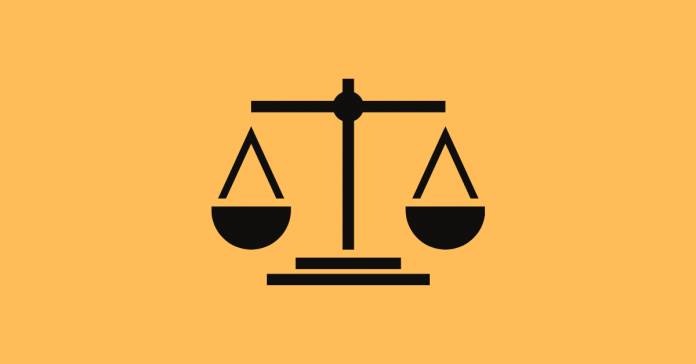This article is written by Sparsh Agrawal.
This article has been published by Sneha Mahawar.
Table of Contents
Introduction
The U.S. copyright law was expanded by the federal government in 1998 with the enactment of the Digital Millennium Copyright Act (DMCA), which clarifies rights as they relate to digital material. Copyright holders can ask service providers for assistance in removing illegal content from websites by using the DMCA notice and takedown procedures. Simply put, a copyright owner or the owner’s representative must send a takedown notice to the relevant service provider asking for the removal of the infringing material in order to start the takedown procedure.
This article gives a detailed insight into what a DMCA takedown notice is, why it is necessary, and how it can be enforced, amongst other things.
How DMCA takedown notices came to be
The DMCA was enacted by Congress in 1998, and former President Bill Clinton then signed it into law. In response to the rising issue of peer-to-peer file-sharing websites that made it simpler for people to obtain copyrighted movies, music, and other media unlawfully, the act was created. The DMCA was developed in collaboration with media organisations and legislators.
The DMCA has run into a few issues since it was put into existence. For instance, DMCA agents for web servers and search engines should be registered with the US Copyright Office. However, there is a charge associated with this registration that many businesses do not wish to pay. As a result, while DMCA agent information is often accessible online, the lists provided by the Copyright Office are rarely updated.
The DMCA safeguards internet service providers (ISPs), sometimes known as online service providers (OSPs), in addition to copyright owners. These ISPs are shielded from infringement claims as long as they abide by DMCA notices and take reasonable steps to stop copyright infringement. If ISPs didn’t participate in the infringement with knowledge and didn’t profit financially from it, this protection is still in effect.
Another benefit for ISPs is that their client, the person who submitted the information in the issue, cannot sue the ISP for deleting it if it turns out that the item in question did not violate any copyrights.
What is a DMCA takedown notice
Copyright holders can utilise the DMCA notice and takedown process to get user-uploaded content that violates their copyrights removed from various kinds of websites. These kinds of websites include, but are not limited to, search engines (like Google or Bing), entertainment sites (like Youtube or Twitch), or even web hosts (like GoDaddy or Bluehost). The procedure involves a service provider receiving a takedown notice from the copyright owner or the owner’s representative asking the provider to remove content that violates their copyright(s).
The copyright law specifies the number of details that must be present in a DMCA takedown notice. The service provider could refuse to remove the material if even some of these requirements are not met. There is a possibility that the service provider may nevertheless decline to remove the item from the site even if a takedown notice complies with all legal requirements. In turn, failure to do so exposes them to potential secondary responsibility for aiding in copyright infringement.
Not only may someone issue a DMCA takedown notice for content that is infringing but also for any indexes, references, or links that direct users to content that is infringing. Any copyrighted content that could be violated online is protected by the DMCA, including:
· Videos
· Audio recordings, such as music
· Articles, novels, poetry, and other forms of written language.
· Images that you’ve published on the social media pages for your company
· Photographs and other images like still artwork
· Software
Elements of a DMCA takedown notice
A copyright owner or the owner’s representative must send a takedown notice to the relevant service provider asking for the removal of the infringing material in order to start the takedown procedure. Details on how and where to send a takedown request are frequently included in the ‘Terms of Use’ of a website. A copyright holder should confirm that the other parties’ usage of the content does not meet the requirements for fair use before delivering the notification.
According to the copyright law, a takedown notice must contain the following components:
- the physical or digital signature of the copyright owner or owner’s representative.
- Identification of the infringing part of the content, the infringing work(s), and the location of the infringing activity (typically by providing the URL).
- Make sure the sender’s contact information is listed in the notice, including an email address.
- A declaration that the content is not allowed by the owner of the IP or copyright, its agent, or the law, according to the notifier’s good faith.
- A declaration that the details given are true and that the notifier has permission from the owner of the IP or copyright to file the complaint.
Important steps before filing a DMCA notice
A few steps ought to be taken before sending a DMCA takedown notice.
Firstly, determine if a DMCA request will be the most practical way to remove the content in your specific circumstance. A DMCA notice is most likely insufficient if, for example, you wish to have an unfavourable or libellous article about your company deleted from the internet. The DMCA notice could result in the removal of any copyrighted images linked to the article, but it will not get rid of the undesirable content itself. However, you might not want to commit to the expense of a lawsuit. If so, it’s better to attempt some alternative cost-free or, at least, affordable measures.
Secondly, find out if the host, search engine, or infringing website is based in the US. Foreign nations are not required to abide by American law, although some may do so willingly. Before submitting a DMCA notice, one should absolutely talk to an experienced DMCA attorney about this.
Furthermore, it is very important to contemplate the potential consequences of a DMCA notice. When an effort is made to restrict internet information, the Streisand Effect may happen. The ‘Streisand Effect’ is a phenomenon where an attempt to censor or hide something may result in drawing more attention to that particular thing. It is usually better to explore an alternate removal technique if there is a potential that your DMCA request might result in the Streisand Effect.
Before submitting a DMCA takedown notice, you should also attempt to contact the content’s original poster. Naturally, every communication with another person needs to be properly thought out. Threatening legal action or using derogatory words might backfire and make things unpleasant.
How to file a DMCA notice
A DMCA notice can seem straightforward to the untrained observer, but there are many small nuances that go into making a request. The denial of a DMCA notice might result from leaving even one small detail. Companies are not required to abide by your request if they do not get DMCA takedown requests with precise wording and justifications.
There are 2 main steps that are very critical in this process.
Determine where to send the DMCA notice
Understanding where and how to send a DMCA request is the first step in the process. The individual who posted the material, the website where it was posted, the web host or ISP, or the website registrar might all receive the request. Using tools such as whois.domaintools.com, whatismyipaddress.com, etc., to retrieve this information for free is highly recommended. The ‘Terms and Conditions’ of most websites may also provide contact information for DMCA-related issues.
Drafting the DMCA notice
This is when things may become quite challenging. DMCA notices must adhere to stringent guidelines and might be dismissed by even the smallest mistake or omission. It is crucial to ensure that the DMCA takedown notice contains each of the aforementioned 5 elements as well. If any of these elements are missing can be ignored by the receiver. Consequently, a request may be turned down for failing to include enough precise information as well.
Especially when it comes to identifying the infringing content, it is insufficient to merely offer a link to a page with a tonne of material, such as just mentioning “twitch.com.” For example, “The copyrighted content is broadcasted from the 16-minute timestamp till the 21-minute timestamp of this twitch live stream from ‘so-and-so’ streamer” would be a particular identification of the infringing material. If there are numerous or extensive infractions, you should be as descriptive as you can while making sure you are identifying all copyrighted material.
Risks of filing a DMCA notice
Complications can still emerge even if the DMCA takedown notice is correctly prepared. Websites frequently discard incorrect requests without even trying to respond. However, there is a small chance that someone would take offence or deny your claims. If this occurs, it is advised that you hire a DMCA takedown specialist to guide you through some of the following possible situations.
Denied requests
The ideal outcome is that the takedown notice was turned down as a result of a small, correctable mistake. There will be a significantly more serious issue if the receiver rejects your request on the grounds of “fair use.” Only by suing for copyright infringement can you contest “fair use.” Sending a DMCA request is far quicker and less expensive than starting litigation.
Counter notices
A counter-notice, in its simplest form, is a response from the person or entity in charge of the copyright-violating content. They may submit a counter-notice if they have a sincere opinion that the item is not infringing or was improperly deleted. One can assume that the person or entity is someone who is prepared to defend their position when they issue a counter-notice. Additionally, they also indirectly agree to be sued over the disputed material by delivering the counter-notice.
Retaliation
Some individuals may not respond well to notice, no matter how legitimate or professional it is. Some receivers even make the DMCA notice public, which can make the material that is to be deleted more well-known.
Lawsuits
The DMCA, under Section 512(f), permits the recipients of erroneous or malicious copyright takedown notices to be sued. There is a chance that one could have to defend themselves in a lawsuit, despite the fact that these cases are uncommon and hard to establish unless the bad faith or frivolousness is blatantly clear.
How long does the DMCA takedown process last
Depending on the specifics, a DMCA takedown might take anywhere between 24 hours and six months to complete. Processing times might vary depending on the DMCA notice recipient’s level of activity, the complexity of their website, and if they are disputing the authenticity of the notice.
Responding to a DMCA takedown notice
The first thing you should do if you get a DMCA takedown notice for material posted online is to make sure you are not truly violating someone else’s copyright. If you are infringing on someone else’s copyright, it is best to stop it at once before it can go any further. This could necessitate taking the material down from all internet postings.
You should carefully read the takedown notice’s wording in relation to the notice itself. Make sure the notice is complete with all the information we previously covered. If you honestly believe you violated someone else’s copyright, you may decide to willingly comply with a faulty request. However, you are not required by law to accede to a false request.
You might be allowed to respond with a counter-notice if you feel the content is fair use or that you are not violating anyone’s rights. For example, a counter-notice is usually the ideal answer if the individual does not own the copyright to the work or the material is not copyright protected.
Before issuing a counter-notice, you may wish to speak with an attorney if you think the content is protected under the fair use exemption. It is advisable to ascertain if you have a good case before issuing a counter notice on the grounds of fair use because fair use can be a little difficult to define.
Conclusion
It is not mandatory to register a copyright on your work in order for it to be protected by the DMCA. However, if you find yourself in a legal dispute where a DMCA takedown notice is issued, registering the copyright could help. You can also determine whether using a DMCA takedown notice is your best choice for deleting online content with the assistance of an expert DMCA attorney. Additionally, they may assist you in obtaining copyrights, maintaining your privacy, and lowering the hazards associated with copyright ownership too.
In conclusion, DMCA takedown notices are a potent instrument for retaliating against individuals who infringe upon one’s copyrighted content. For authors, filmmakers, photographers, and anybody else whose work may be infringed upon online, DMCA notices are an effective instrument to stop the many effects of having someone reproduce your work illegally. You should now have a better understanding of the DMCA and how takedown notices function, both when they are issued against you and when you need to safeguard your own material.
References
- https://www.copyright.gov/dmca/
- https://www.dmca.com/FAQ/What-is-a-DMCA-Takedown
- https://copyrightalliance.org/education/copyright-law-explained/the-digital-millennium-copyright-act-dmca/dmca-notice-takedown-process/
- https://copyrightalliance.org/education/copyright-law-explained/the-digital-millennium-copyright-act-dmca/dmca-notice-takedown-process/
- https://www.cmu.edu/iso/aware/dmca/
Students of Lawsikho courses regularly produce writing assignments and work on practical exercises as a part of their coursework and develop themselves in real-life practical skills.
LawSikho has created a telegram group for exchanging legal knowledge, referrals, and various opportunities. You can click on this link and join:
Follow us on Instagram and subscribe to our YouTube channel for more amazing legal content.
 Serato DJ Crack 2025Serato DJ PRO Crack
Serato DJ Crack 2025Serato DJ PRO Crack














 Allow notifications
Allow notifications



